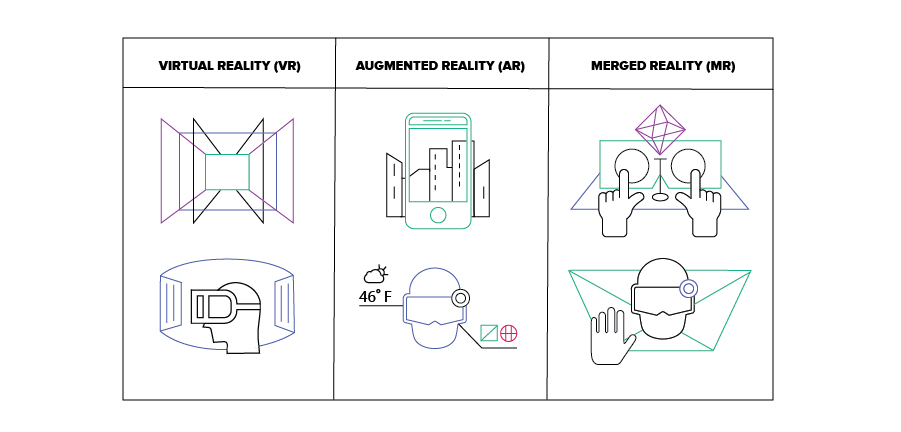Those that think immersive technology is just for video games ha ven’t been paying attention to advances over the last few years. Using augmented, virtual, or merged reality technologies can empower a company to leapfrog the competition and even transform the market.
To determine which technology is best, it’s important to understand the difference between the three:
- Virtual reality (VR) is technology that creates an immersive, synthetic experience.
- Augmented reality (AR) is technology that enhances a real experience.
- Merged reality (MR) combines AR and VR, touching on all senses for a fully immersive experience.

AR is especially effective on the consumer side of business. Use it to increase sales, enhance experiences, or improve logistics and wayfinding. AR can take educational approaches to the next level by empowering workers with the latest, most accurate information available in context, when and where they need it most. For example, heads-up displays on AR glasses or safety helmets can assist those in the field by recognizing equipment and guiding workers through step-by-step diagnostics.
VR has outstanding applications in education, medical, and retail—such as store layout reconfigurations and A/B testing in a virtual store space, saving considerable time and money in the process. VR can also be applied to interactive training scenarios, perfect for fine-tuning customer or patient interactions with staff.
And for a total sensory, “wow” experience, merged reality can take all of these applications to the next level, allowing users to feel completely immersed in any given scenario.
Want to know more about enhanced experiences? Check out, “The Future of Intelligent Personalization,” the latest white paper from SoftServe.

